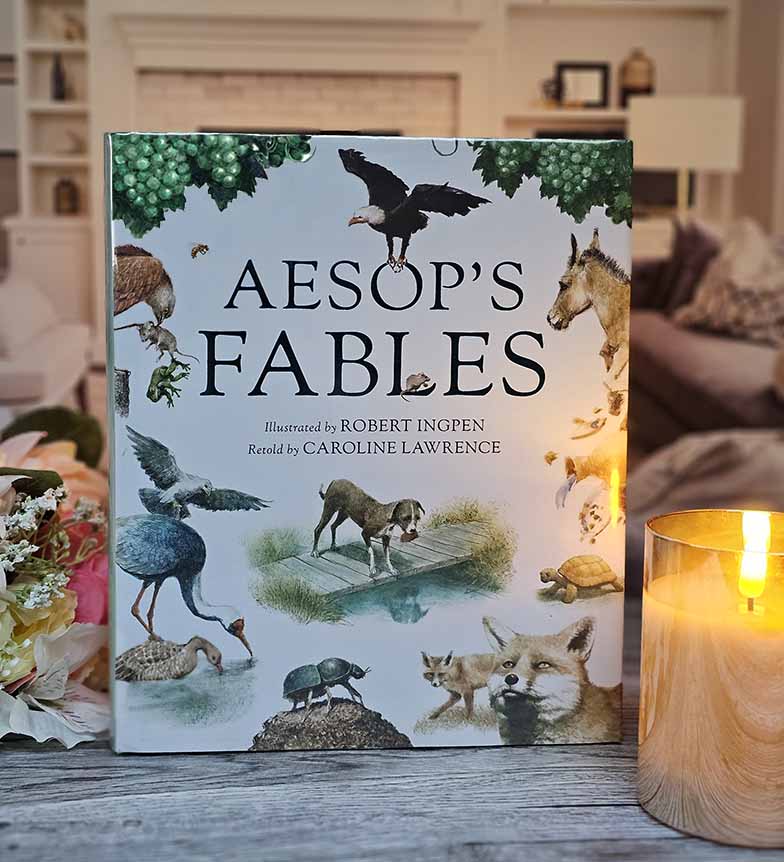
Metamorphoses
by Ovid
A masterful collection of mythological tales exploring themes of transformation, love, and power through the lens of Roman poetry. Ovid weaves together over 250 stories from Greek and Roman mythology into an epic narrative.
Spoiler Warning
This review may contain spoilers. Read at your own discretion if you haven't finished the book yet.
The Art of Transformation: Ovid's Eternal Dance Between Form and Meaning
Metamorphoses stands as one of literature's most ambitious and influential works—a sprawling epic that transforms the entire corpus of Greco-Roman mythology into a unified meditation on change, power, and the relationship between divine will and human experience. Written during the height of the Roman Empire, Ovid's masterpiece transcends its mythological framework to explore timeless questions about identity, transformation, and what it means to be human in a world governed by forces beyond our control.
The Structure: Unity in Multiplicity
Ovid's genius lies in his ability to weave over 250 individual myths into a cohesive narrative spanning from the creation of the world to Julius Caesar's deification. Rather than presenting isolated stories, he creates thematic and structural connections that make the work feel like a single, enormous story about the fundamental nature of existence.
The poem's fifteen books follow a loose chronological structure from primordial chaos to contemporary Rome, but the real organizing principle is thematic—each section explores different aspects of transformation while building toward a understanding of change as the only constant in both divine and human experience.
Literary Innovation and Technique
Narrative Sophistication
Ovid demonstrates remarkable narrative sophistication in his handling of multiple storylines and perspectives. He seamlessly transitions between cosmic creation myths and intimate human dramas, maintaining tonal consistency while exploring radically different scales of experience.
His use of embedded narratives—stories within stories—creates layers of meaning that reward careful reading while maintaining surface accessibility for those seeking entertainment.
Poetic Mastery
The elegiac couplets showcase Ovid's technical virtuosity while serving the larger thematic purposes. The verse form's inherent rhythm mirrors the cyclical nature of transformation that governs the mythological world.
Ovid's descriptive passages demonstrate extraordinary visual imagination, transforming abstract concepts into concrete imagery that makes philosophical ideas emotionally accessible.
Thematic Exploration: Change as Universal Principle
Physical and Psychological Transformation
The literal metamorphoses—humans becoming trees, animals, stars—serve as external manifestations of internal psychological changes. Daphne's transformation into a laurel tree represents not just escape from Apollo's pursuit but the preservation of autonomy through radical self-transformation.
These physical changes often reflect emotional or moral states, making the fantastic elements feel psychologically realistic rather than purely magical.
Power Dynamics and Gender
Ovid's treatment of gender and power relationships feels remarkably contemporary in its complexity. Many transformation stories involve sexual violence or the abuse of power, with metamorphosis serving as both punishment and protection.
The poet shows particular sensitivity to female perspectives in male-dominated mythological narratives, often presenting transformation as a form of agency for characters who lack conventional power.
Love as Destructive and Creative Force
Love appears throughout the work as the primary catalyst for transformation, but Ovid presents it as neither purely positive nor negative. Instead, he explores love's capacity to inspire both creation and destruction, often simultaneously.
The Pygmalion and Galatea story represents love's creative potential, while tales like that of Orpheus and Eurydice demonstrate its capacity for devastating loss.
Cultural and Historical Context
Augustan Rome and Political Subversion
Writing during Augustus's reign, Ovid created a work that both celebrates Roman cultural achievement and subtly critiques imperial power. The emphasis on transformation can be read as commentary on Rome's own political changes and the instability beneath apparent order.
The poem's focus on divine caprice and arbitrary power serves as implicit criticism of autocratic rule, while its celebration of artistic achievement asserts the permanence of culture over political power.
Influence on Western Literature
Metamorphoses became one of the most influential works in Western literature, providing source material for writers from Dante to Shakespeare to contemporary authors. Its influence on art, from Renaissance painting to modern cinema, demonstrates the enduring power of its imagery and themes.
Character Development and Psychology
Divine Characters as Human Archetypes
Ovid's gods display recognizably human emotions and motivations while possessing divine power, creating compelling explorations of how personality traits manifest when freed from normal constraints.
Jupiter's serial infidelities, Juno's jealous rage, and Venus's romantic manipulations provide insight into human nature through exaggerated divine behavior.
Human Characters and Moral Complexity
The human characters in Metamorphoses rarely fit simple moral categories. Heroes display flaws, victims sometimes bear responsibility for their fates, and apparently innocent characters reveal hidden depths.
This moral complexity makes the work feel psychologically realistic despite its fantastical elements, suggesting that Ovid understood human nature with remarkable sophistication.
Philosophical Dimensions
Pythagoras and the Nature of Reality
The final book's extended passage on Pythagorean philosophy provides explicit theoretical framework for the transformations depicted throughout the work. The concept that all matter constantly changes form while energy remains constant gives philosophical weight to the mythological narratives.
This integration of philosophical thought with poetic imagination demonstrates Ovid's intellectual ambition and his desire to create art that operates on multiple levels of meaning.
Time and Permanence
The poem explores the paradox of seeking permanence in a world defined by change. Artistic achievement emerges as the only form of immortality available to humans, while even the gods remain subject to larger cosmic forces.
Literary Technique and Innovation
Narrative Voice and Perspective
Ovid maintains an authorial voice that combines scholarly distance with emotional engagement, allowing readers to experience both intellectual understanding and emotional response to the stories.
His ability to shift between comic and tragic tones within single narratives demonstrates remarkable tonal control and helps maintain reader engagement across the work's considerable length.
Descriptive Writing and Visualization
The poem's most memorable passages often involve detailed descriptions of transformation processes, showing Ovid's ability to make abstract concepts concrete and visual.
These descriptive passages demonstrate extraordinary imagination while serving the larger thematic purposes of the work.
Contemporary Relevance
Identity and Self-Construction
In an era when questions of identity, gender fluidity, and self-transformation dominate cultural discourse, Ovid's exploration of identity as mutable rather than fixed feels remarkably contemporary.
The work's suggestion that transformation can be both imposed and chosen resonates with modern discussions about personal agency and social construction of identity.
Environmental Themes
Many stories involve the transformation of humans into natural elements—trees, rivers, stars—suggesting an interconnectedness between human and natural worlds that speaks to contemporary environmental consciousness.
Power and Vulnerability
The poem's consistent focus on how power operates—often arbitrarily and violently—provides relevant insight for readers thinking about contemporary political and social power structures.
Reading Experience and Accessibility
Translation Challenges
Modern readers depend on translation quality for access to Ovid's poetry, and different translations emphasize different aspects—poetic beauty, narrative clarity, scholarly accuracy.
The best translations balance fidelity to Ovid's meaning with readability for contemporary audiences while preserving some sense of the original's poetic achievement.
Cultural Distance and Universal Themes
While some cultural references require explanation for modern readers, the work's exploration of fundamental human experiences—love, loss, power, change—transcends historical boundaries.
Critical Assessment
Strengths and Lasting Appeal
Metamorphoses succeeds because it combines entertainment value with intellectual depth, providing multiple levels of engagement for different readers and reading approaches.
The work's influence on subsequent literature demonstrates its continued relevance and ability to inspire new creative work across cultures and centuries.
Areas of Challenge for Modern Readers
The work's length and episodic structure can challenge modern readers accustomed to more focused narratives, though this same quality allows for selective reading approaches.
Some cultural attitudes, particularly regarding gender and power, require historical contextualization for contemporary readers.
Final Assessment
Metamorphoses represents one of literature's most successful attempts to create a comprehensive artistic vision that encompasses both human psychology and cosmic order. Ovid's achievement lies in making mythological material feel psychologically realistic while using fantastic elements to explore fundamental questions about existence, identity, and change.
The work's continued influence demonstrates that Ovid succeeded in creating art that transcends its immediate cultural context while remaining deeply rooted in human experience. For contemporary readers, Metamorphoses offers both historical insight into ancient Roman culture and timeless exploration of themes that remain central to human experience.
This is essential reading for anyone interested in understanding the foundations of Western literature, but it also rewards readers seeking entertainment, philosophical insight, or simply exposure to some of the most influential storytelling in human history.
Rating: 3.1/5 ⭐
Perfect for: Classics enthusiasts, mythology lovers, readers interested in foundational Western literature
Consider carefully if: You prefer contemporary narrative styles, or extensive mythological references feel overwhelming
My Notes & Takeaways
Key Themes and Stories
The Nature of Change: "I intend to speak of forms changed into new entities."
The opening line establishes transformation as both literal plot device and philosophical framework. Every story demonstrates how identity, form, and meaning are constantly in flux.
Divine Power and Human Agency: "The gods can do anything, but mortals must accept their limitations while striving to transcend them."
The tension between divine caprice and human agency drives most narratives, showing how individuals navigate forces beyond their control.
Love as Transformative Force: From Daphne becoming a laurel tree to escape Apollo, to Pygmalion's Galatea coming to life, love consistently serves as the catalyst for profound change—sometimes desired, sometimes devastating.
You Might Also Like

Aesop's Fables
by Aesop
A timeless collection of brief stories featuring animals and mythical creatures that convey moral lessons about human nature, virtue, and wisdom through simple but profound narratives.

Your Perfect Year
by Charlotte Lucas
When a mysterious diary falls into his hands on New Year's Day, a rigid businessman embarks on a life-changing journey of tasks and self-discovery that connects him with a free-spirited woman and changes both their lives forever.